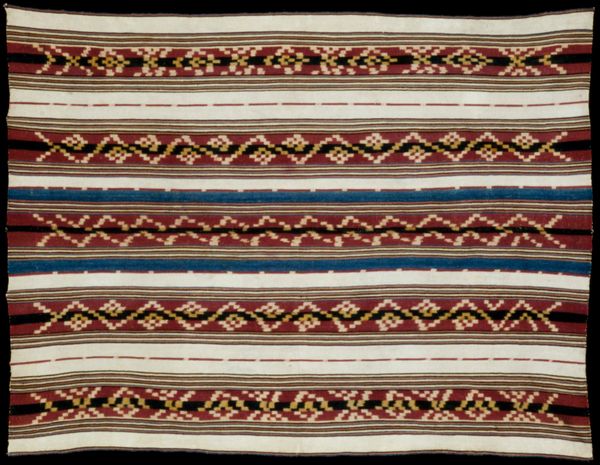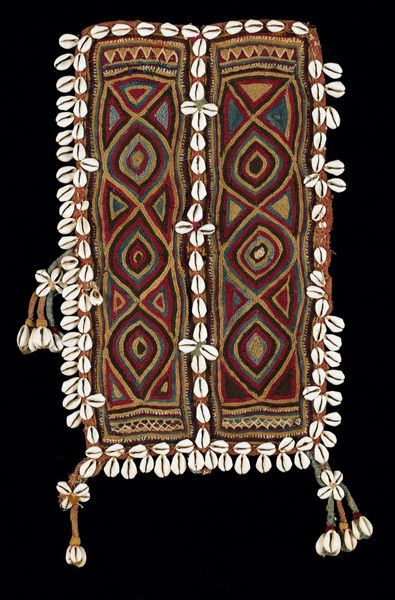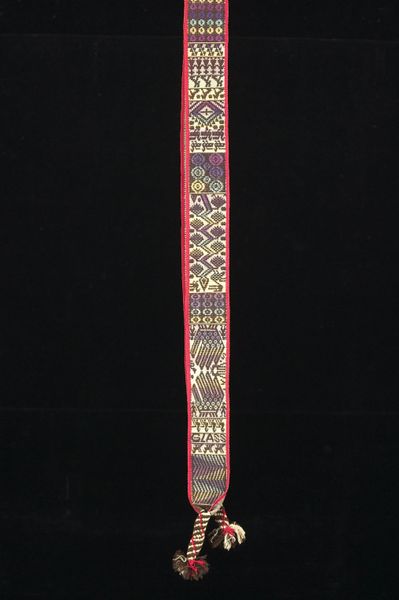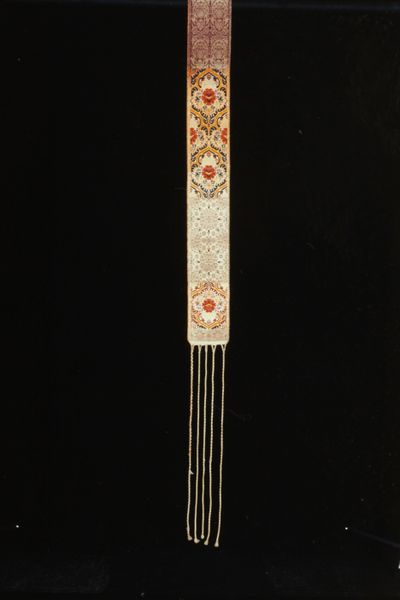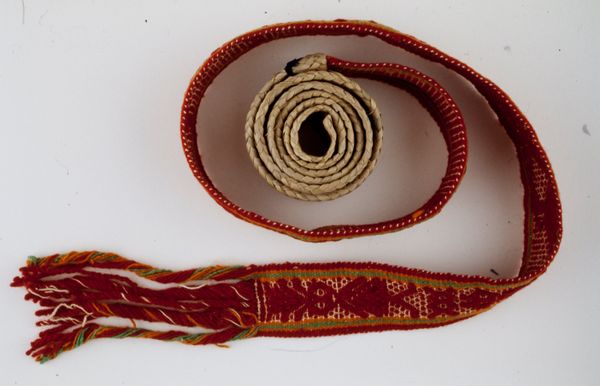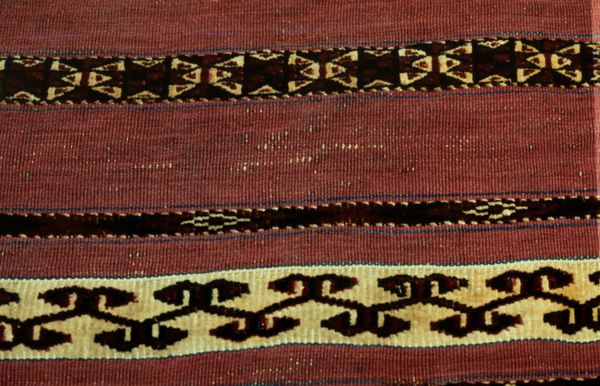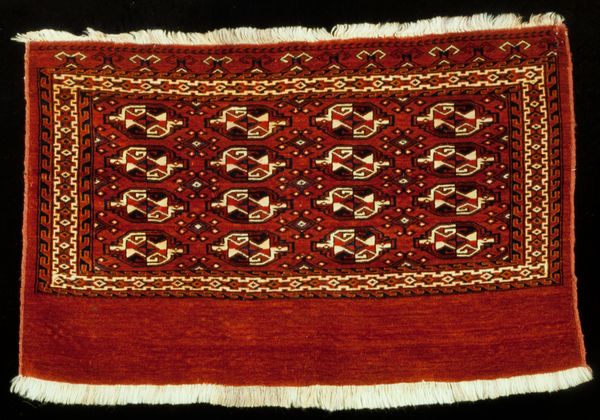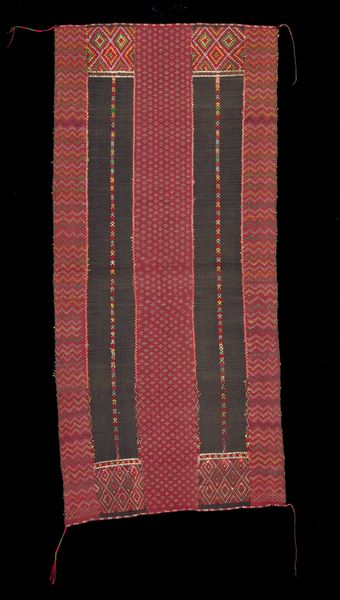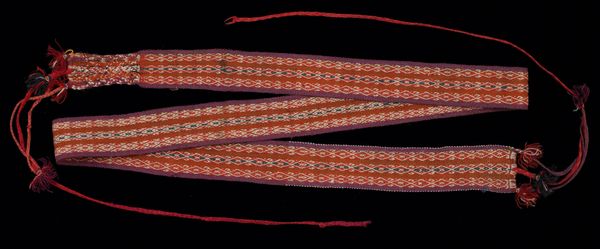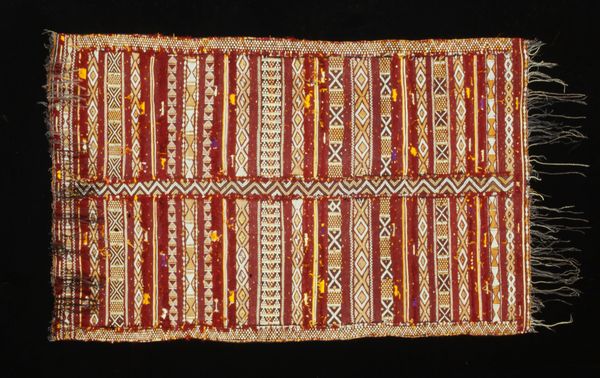
fibre-art, weaving, textile
#
fibre-art
#
weaving
#
textile
#
geometric
Dimensions: 80 x 3 1/4 in. (203.2 x 8.3 cm)
Copyright: Public Domain
Editor: So, this piece is simply titled "Belt," created around the 20th century by an anonymous artist. It's made with cotton and wool, utilizing weaving techniques. It seems really tactile. I’m immediately drawn to the intricate patterns. What aspects of this belt do you find particularly interesting? Curator: Well, I find the materiality incredibly compelling. Look at the conscious selection and combination of cotton and wool. How do these materials, readily available, define the limits and possibilities of the weaver’s artistic expression, and their place in the marketplace of materials? Consider the labor involved in its production. The time invested in hand-weaving such a detailed geometric pattern transforms a simple object into something imbued with social and cultural significance. What can a common material object reveal about production processes and craftsmanship in a community? Editor: I see your point about labor. The act of weaving itself becomes part of the narrative, rather than just a method for making a useful thing. Curator: Precisely! How does this bridge, or even challenge, the boundaries we typically set between “high art” and “craft”? Is it art *because* of its intricate hand-weaving, challenging assumptions that machine production is more valuable? Editor: That’s a different way of viewing it than I originally thought. Seeing the skill and labor that went into creating this belt underscores how much our definitions of art and craft reflect larger economic and cultural values. It shifts my focus to consider it as less of an object and more as a trace of the maker. Curator: And understanding those traces gives us a far deeper insight into the belt's historical and social place, and into the cultural implications of how materials can shape what we think of as art. Editor: Thanks for helping me unpack that! It's fascinating to think about art not as disconnected from material culture, but actually embedded within it.
Comments
No comments
Be the first to comment and join the conversation on the ultimate creative platform.
